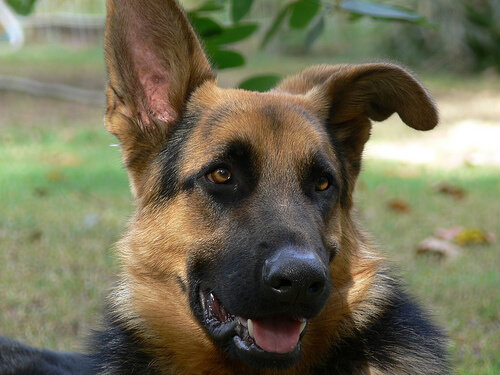How to Clean Your Dogs Ears

Dogs ears accumulate all kinds of filth. After all, dogs’ ears can be the ideal environment for fungi and bacteria that cause infections, and one of the main sources of bad pet odor. Therefore, in the following article, we will give you some tips to clean your dog’s ears and to avoid ailments and diseases.
Tips to clean your dog’s ears
Some people do not dare to clean their dog’s ears and instead go to a veterinarian or a pet grooming salon to do that work. However, it can be done at home without problems (as long as they are not infected or hurt), saving time and money.
It is very important that you check the hygiene of the animal’s ears every week, especially if their breed has ears that are floppy or “stuck” to the skull (as happens, for example, with Cocker Spaniels).
Here are the steps and tips to clean your dog’s ears:
1. Inspect the condition of his ears
It is normal for them to produce a little ear wax and to accumulate dirt in this area. If you see yellow, gray, or light brown material, as well as blood (dry or not), take him to the veterinarian. If he has never received an ear canal cleaning, it is a good opportunity for this expert to do so.

2. Look for foreign bodies
Parasites like ticks search out dogs’ ears for their home. There, the pet cannot reach them with his teeth. If your canine goes out on the street, wallows on the lawn or goes to the bathroom near trees, you may also find grass, flowers or even seeds in his ears. In any case, you must remove them in a gentle manner.
3. Detect bacterial or fungal infections
When this happens, the animal’s ears have an foul odor and you can see brown or green secretions. They may require the administration of a special topical medication. Cleaning alone does not cure this and could even worsen the situation.
4. Use special products
In pet stores, you can find an endless number of items to clean your dog’s ears. Another option is to make a homemade mix with products that you have at home, such as alcohol and apple cider vinegar (combine them in equal parts at room temperature). Do not use any household cleaners in case he has an infection or an irritation because it can worsen the situation.
5. Use cotton and water
Many times, a little warm water and a cotton ball is enough to clean your dog’s ears. Rub slowly without exerting too much pressure, but with enough force to remove any gunk from the area.
6. Do not forget his ears
Once you have finished with the ear canal, move to the outside of the ear. Use another cotton ball and clean water. Be careful to avoid tearing the skin and do not use alcohol or vinegar if he has wounds, because it will sting and it will be very difficult to get him to allow subsequent cleanings.

7. Irrigate the ears if necessary
Consult the veterinarian, as in some cases, dogs can generate more ear wax than usual, and it is necessary to perform an irrigation with a special liquid or warm water. Once the ear canal is soaked, gently rub the base of the ear for 1 minute. Wipe away the gunk that appears with gauze or cotton.
8. Let the dog shake his head
At the end of the cleaning, your pet will want to shake his head to get rid of any liquid or gunk that has remained in the ears. Let him do it, because he will finish up the cleaning that you have started. Just move away a bit so he does not get you dirty. And do not forget to clean the space well afterwards. We recommend that you use the kitchen, bathroom or yard (terrace or balcony) for this task.
9. Keep the routine
It is very important that you schedule a cleaning each month, at minimum. So you do not forget, you can mark it on your calendar or leave an alarm on your mobile phone. And, if necessary, move the date up if the animal has gone to the park more than usual, has had contact with water, has gotten into a puddle after the rain, etc.
This text is provided for informational purposes only and does not replace consultation with a professional. If in doubt, consult your specialist.